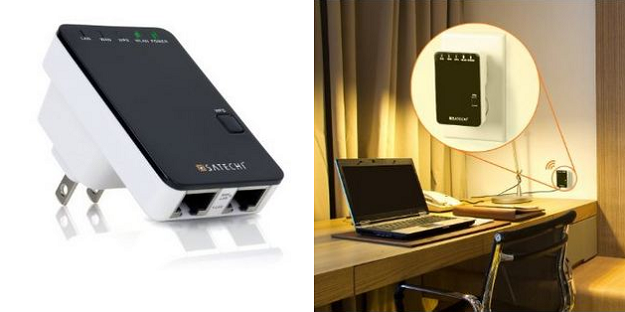
Heading out the door? Make sure to grab your keys, wallet, cell phone … and router. If Satechi gets its way, its palm-sized black-and-white router may join the list of essentials to slip into a laptop bag before heading out on a business trip, especially since it’s less than half the price of an Airport Express.
Satechi’s new 802.11n Multifunction Mini Router zips along at up to 300 Mbps, all in a 2.9-inch-square gizmo that’s less than an inch thick. As a standard router, it offers a private, secure connection for conference rooms and hotel offices, maximizing bandwidth speed for video calls and the like. Of course, in hotels that are sleazy enough to charge a per-device internet connection charge, it can extend Wi-Fi access to multiple coworkers across various devices.
However, one of the router’s biggest perks is its ability to function as a repeater. According to manufacturers, it can boost a weak Wi-Fi signal up to an additional 100 feet. This could end the days of perching your laptop up on a windowsill to stream the latest episode of Downton Abbey. Additionally, in “bridge mode,” the router can retransmit an existing Wi-Fi signal under a different name and password for added security.
Finally, the mini router can be plugged into a “Wi-Fi-ready” device such as a Smart TV or Xbox 360, adding connectivity for a much more modest price than most Wi-Fi dongles. The Satechi mini router is currently priced at $40 on Amazon.com.


